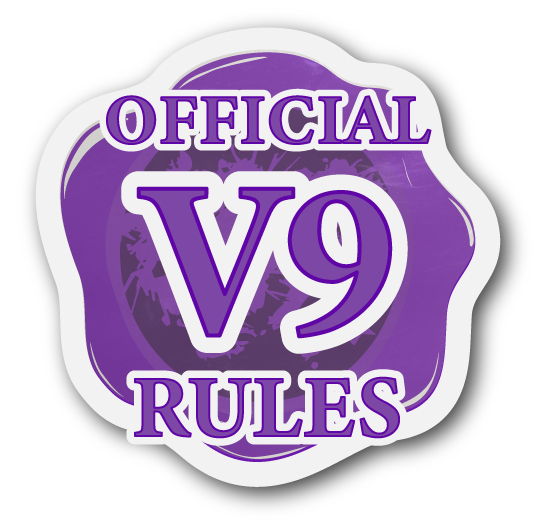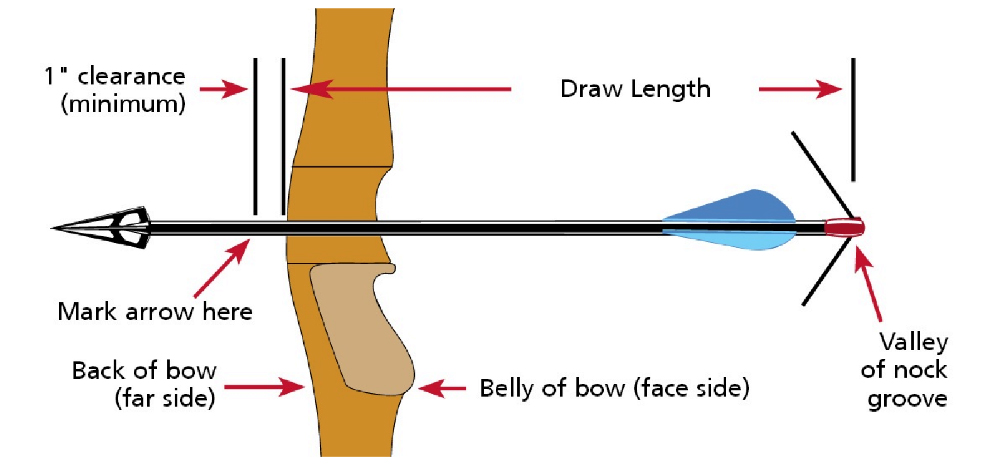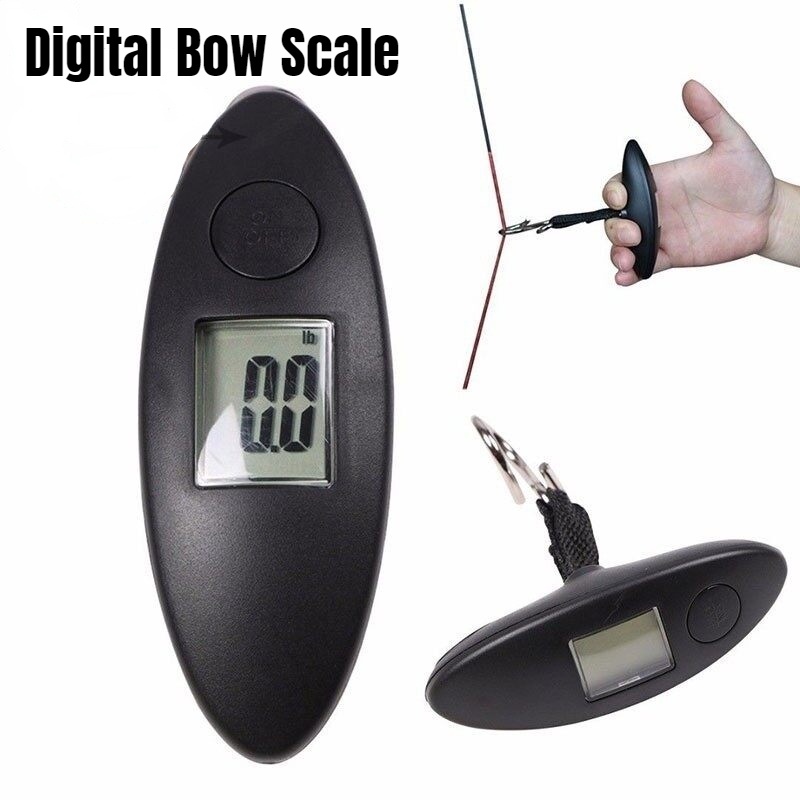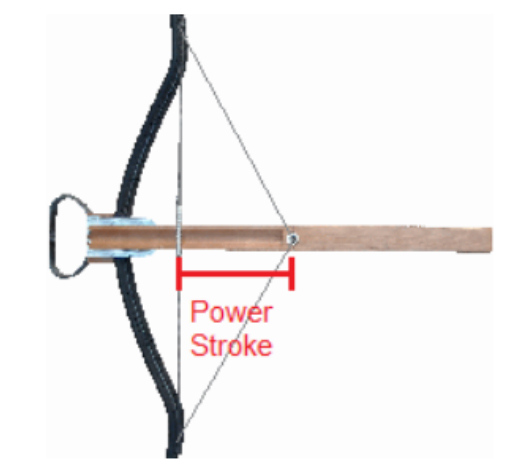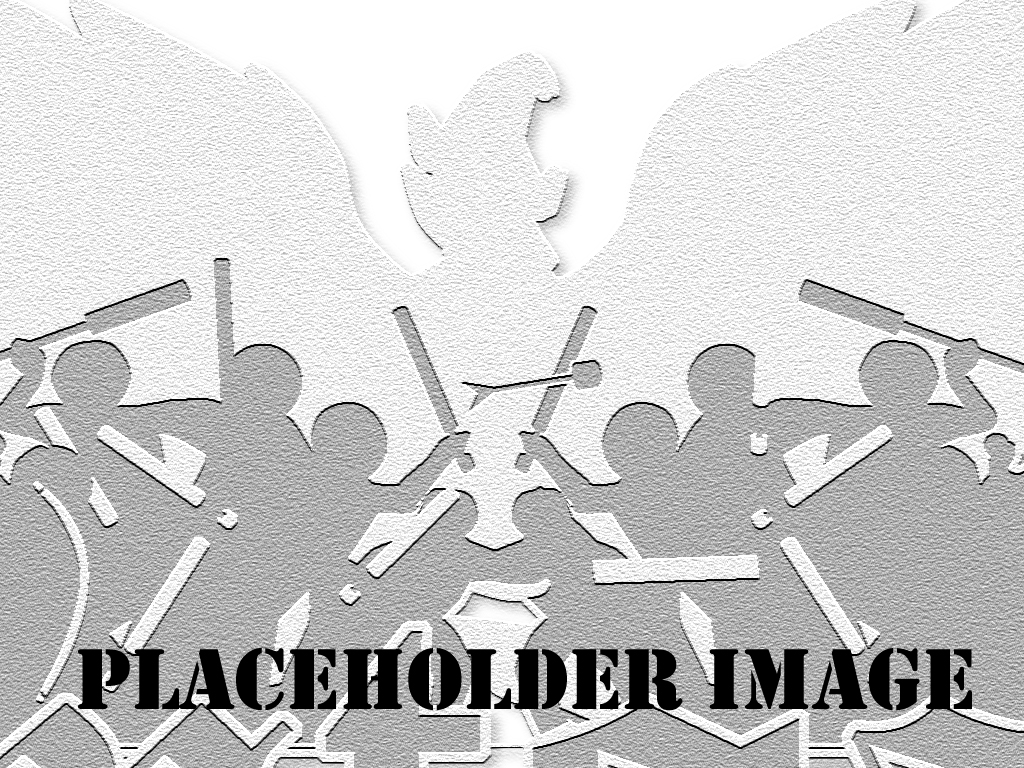Difference between revisions of "V9: Glossary"
m (Add back to top buttons) |
m (Game Item) |
||
| Line 339: | Line 339: | ||
======<u><big>Function</big></u>====== | ======<u><big>Function</big></u>====== | ||
As in 'Amtgard Function'; a catch-all term for Amtgard gatherings, regardless of size or purpose. | As in 'Amtgard Function'; a catch-all term for Amtgard gatherings, regardless of size or purpose. | ||
| + | |||
| + | <noinclude>[[#top|Back to top.]] | ||
| + | |||
| + | </noinclude> | ||
| + | ---- | ||
| + | |||
| + | ======<u><big>Game Item</big></u>====== | ||
| + | This term usually refers to a portable [[V9: Objectives|game objective]] or other object that is important to the current [[V9: Game Modes|activity]]. | ||
<noinclude>[[#top|Back to top.]] | <noinclude>[[#top|Back to top.]] | ||
Revision as of 22:43, 24 February 2023
- The Amtwiki is the official home and primary source for Amtgard V9 Rules as of February 25, 2023.
- These rules are currently in Open Alpha Playtest. See the Playtest Disclaimer for more details.
- To learn more about Amtgard V9 Development, please visit Amtgard.com.
- To view the current Amtgard V8 ruleset, please see the Amtgard V8 Rulebook.
Glossary
Developer Note: This is a work in progress based on the terms and keywords that we believe players will want to reference. Anything with an existing definition elsewhere in the ROP will have a summary here and a link to the actual entry. Anything not defined elsewhere will have the full definition here. For now, we are updating this as necessary. Feel free to suggest terms for inclusion on the Amtgard V9 Discord Server.
Contents
- 1 Glossary
- 1.1 A Note About Unlisted Terms
- 1.2 Affected
- 1.3 Amtgard International (AI)
- 1.4 Apprentice
- 1.5 Approved Open-Cell Foam
- 1.6 Approved Closed-Cell Foam
- 1.7 Archery/Archer
- 1.8 At-Arms
- 1.9 Authority
- 1.10 Boffer
- 1.11 Carried
- 1.12 Circle of Monarchs (AICOM/COM)
- 1.13 Class
- 1.14 Code of Conduct (COC)
- 1.15 Color Code
- 1.16 Contact Projectiles
- 1.17 Crossguard
- 1.18 Damage
- 1.19 Death Count
- 1.20 Declare / Announce
- 1.21 Destroyed
- 1.22 Draw Length
- 1.23 Draw Weight
- 1.24 Effect
- 1.25 🌶️ Experimental
- 1.26 Flat Blade
- 1.27 Foam
- 1.28 Forced Movement
- 1.29 Free Hand
- 1.30 Function
- 1.31 Game Item
- 1.32 Gameplay
- 1.33 Gameplay Advantage
- 1.34 Half-Draw
- 1.35 Harmless
- 1.36 Healed
- 1.37 Heavy Padding
- 1.38 Hit
- 1.39 Hit Locations
- 1.40 Hit Test
- 1.41 Hold (Safety Call)
- 1.42 Hold (in hand)
- 1.43 Illegal
- 1.44 Illegal Obstructions
- 1.45 In-Character
- 1.46 Knights
- 1.47 LARP
- 1.48 Legal
- 1.49 Line of Sight
- 1.50 Loaner Gear
- 1.51 Magic Switching
- 1.52 Move
- 1.53 Non-Player Character (NPC)
- 1.54 Non-Striking Surfaces
- 1.55 Nullified
- 1.56 Omni
- 1.57 Ongoing Effect
- 1.58 Open Hand
- 1.59 Out-of-Character
- 1.60 Owner
- 1.61 Padding
- 1.62 Page
- 1.63 Paragon
- 1.64 Player Character (PC)
- 1.65 Player Versus Environment (PVE)
- 1.66 Player Versus Player (PVP)
- 1.67 Pommel
- 1.68 Reeve
- 1.69 Repair
- 1.70 Replenish
- 1.71 Respawn
- 1.72 Restored
- 1.73 ROP (Rules of Play)
- 1.74 Rules Representative (RR)
- 1.75 Rules Representative Organizer (RRO)
- 1.76 Rules As Intended (RAI)
- 1.77 Rules As Spoken (RAS)
- 1.78 Rules As Written (RAW)
- 1.79 Slash
- 1.80 Spirit of the Rules
- 1.81 Squire
- 1.82 Stabbing Projectiles
- 1.83 Streamers
- 1.84 Stab
- 1.85 States
- 1.86 Strike
- 1.87 Strike Legal
- 1.88 Striking Surfaces
- 1.89 Super Heavy Padding
- 1.90 Tails (Spellball Construction)
- 1.91 Unattended
- 1.92 Unwielded
- 1.93 Use
- 1.94 Version
- 1.95 Walking Pace
- 1.96 Wield
- 1.97 Worn
- 1.98 Wounds
A Note About Unlisted Terms
If a term is not defined anywhere in this rulebook, the most commonly accepted definition of the term should be applied. If multiple definitions exist, use the one that makes the most sense.
Affected
When used in the context of gameplay, Affecting something means successfully imparting an in-game mechanic onto something else, such as a Wound, a State, or other effect.
Blocking, parrying, evading, or otherwise being immune to an effect does not count as being affected, however Shield Crushing, triggering Resistances, and other limited forms of protection *do* count as being affected because the interaction is still imparting some kind of change.
Real life physical and emotional changes do not count for the purposes of 'Affect'. An player that is intimidated by their opponent does not count as being affected. A player that dodges or runs away from magic does not count as being affected.
Amtgard International (AI)
Amtgard International is the overall governing body of Amtgard. You can learn more about them on the official Amtgard website: https://www.amtgard.com
Apprentice
An Apprentice is a player who is under mentorship from a Paragon. Apprentices may wear a Silver-Trimmed Belt Favor in the color of the associated class.
Approved Open-Cell Foam
See Padding
Approved Closed-Cell Foam
See Padding
Archery/Archer
Only people playing the Archer class are referred to as Archers in Amtgard. For the sake of ambiguity, a player using a bow in any context is referred to as a Bow-User.
At-Arms
An At-Arms is a player who is under mentorship from a Knight or Noble. Pages may wear a Black Belt with Silver Trim to signify their position.
At-Arms can also be referred to as: Man-At-Arms, Woman-At-Arms, Comrade-at-Arms, Sword-at-Arms, Shieldmaiden, Shield Brother, or other similar terms.
Authority
Authorities are players within the game that have the power or right to give orders, make decisions, and enforce obedience within a certain realm of the rules. The common Amtgard authorities include Rules and Safety Authorities and Officers.
Boffer
A boffer is a common term used to describe a foam-padded weapon used for full speed LARP combat. Latex-coated weapons are not considered Boffers.
Carried
Circle of Monarchs (AICOM/COM)
A council of leaders. In Amtgard, the Amtgard International Circle of Monarchs (AICOM) is composed of the Monarchs of each Kingdom. Within each Kingdom, a Circle of Monarchs includes the Monarchs of each park therein.
Class
Code of Conduct (COC)
Color Code
Contact Projectiles
Crossguard
This refers to an optional portion of a Melee Weapon at the juncture of the blade and handle designed to deflect blows and protect the hand from injury. Crossguards must follow the rules for Multi-Ended Weapons.
Damage
Damage is a multi-purpose term that deals with wounds and armor points.
- A player is damaged when they suffer a wound or lose armor points.
- An attack causes damage if it inflicts a wound or removes armor points.
Death Count
Declare / Announce
Declarations and announcements are synonyms in this rulebook. They are mandatory spoken statements to inform other players about the state of the game. They usually deal with aspects that are not easily perceived in real life, such as enchantments, states, and other such effects.
Players are always able to make declarations, regardless of their in-game ability to speak.
Different rules will handle declarations in different ways. When required, players must make declarations in a timely manner according to the rule that required the declaration. Declarations cannot force a player to interrupt their own incantation, a prior declaration, or any other similar spoken action, but they must make the declaration as soon as possible afterwards.
Other players are only allowed to request declarations for information that is noted as being available that way. For example, a player may ask their opponent to declare their armor coverage, but they cannot ask their opponent to declare their spell list.
Developer Note: Regulating the exact timing of declarations can be extremely difficult in the chaos of live combat. It is important for participants to place their Honor System Responsibilities above their desire for competitive advantage and act in good faith to ensure everyone has the information they need to execute the rules of the game.
Developer Note: This entry will be updated as the Full-Class rules are introduced.
Destroyed
Draw Length
Draw length is the measurement from the deepest part of the bow grip to the nock groove when at full draw.
Draw Weight
“Draw weight” means the amount force needed to pull a bowstring to full draw. This is commonly called the bow's poundage.
Calculating Draw Weight on a normal "vertical" bow
- Vertical bows measure draw weight in pounds.
- The simplest way to measure a bow’s draw weight is to use a scale that can hook onto the bowstring. Several bow draw weight scales are available that are designed for this purpose.
- Using a measuring device draw the bowstring may make your draw shorter; Ensure you are bringing the bow to a 28” draw length. You can use a sufficiently long arrow and mark the 28” draw point on it. When taking measurements in the future, you can use this “ruler” arrow to save time.
Calculating Draw Weight on a crossbow
- Crossbow draw weight is measured in Inch-pounds and required a few extra steps compared to vertical bows.
- Inch-pounds are calculated by multiplying draw weight (see above) by the power stroke.
- Power stroke is the length between the crossbow's string in the rearmost, or cocked position, and it's uncocked, resting point, measured in inches. It very roughly equates to draw length in a vertical bow.
450 Inch-Pound Quick-Reference Chart
Below is a mathless way to determine if your crossbow is legal for use in Amtgard combat. Consult the chart below and find your crossbow's power stroke. If your draw weight is equal or less than the associated value, it is legal. If it is greater, then the crossbow cannot be used.
| If Power Stroke is... | Then Your Max Draw Weight is... |
|---|---|
| 6 | 75.0 |
| 6.5 | 69.2 |
| 7 | 64.3 |
| 7.5 | 60.0 |
| 8 | 56.3 |
| 8.5 | 52.9 |
| 9 | 50.0 |
| 9.5 | 47.4 |
| 10 | 45.0 |
| 10.5 | 42.9 |
| 11 | 40.9 |
| 11.5 | 39.1 |
| 12 | 37.5 |
| 12.5 | 36.0 |
| 13 | 34.6 |
| 13.5 | 33.3 |
| 14 | 32.1 |
| 14.5 | 31.0 |
| 15 | 30 |
| 15.5 | 29 |
| 16 | 28.1 |
| 16.5 | 27.3 |
| 17 | 26.5 |
| 17.5 | 25.7 |
| 18 | 25.0 |
| 18.5 | 24.3 |
| 19 | 23.7 |
| 19.5 | 23.1 |
| 20 | 22.5 |
Effect
🌶️ Experimental
Playtest rules listed as 'Experimental' represent more extreme concepts that are more likely than other playtest rules to be removed entirely if feedback and playtest results are unsatisfactory. The current experimental playtest rules are:
- Long Weapon Armor Breaking Variant
- Tower Shields
Flat Blade
A Flat Blade is a common term used to describe a weapon that is made with one or two striking edges instead of being Strike-Legal throughout its entire circumference.
Foam
Forced Movement
Forced Movement occurs whenever a player is required to move by some sort of in-game Effect. Abilities such as Shove and Teleport are examples of Forced Movement.
Free Hand
Function
As in 'Amtgard Function'; a catch-all term for Amtgard gatherings, regardless of size or purpose.
Game Item
This term usually refers to a portable game objective or other object that is important to the current activity.
Gameplay
Gameplay refers to action happening during an active game using the rules and mechanics of Amtgard.
- Running, jumping, attacking, casting, talking to team-mates, etc. are all examples of gameplay.
- Answering your phone, drink some water, talking to out-of-game individuals, etc. are not considered part of gameplay.
Gameplay Advantage
A Gameplay Advantage is whenever one player is able to use the mechanics and rules of the game to put themselves into a favorable or superior position compared to their opponents.
If a player is instructed to avoid gaining a gameplay advantage due to X, it means that the player should not capitalize any opportunities presented by X. This typically relates to the Honor System and often deals with the expected etiquette of LARP interactions.
Half-Draw
Amtgard defines Half-draw as when the bowstring is at the midway point between its natural resting point and full draw.
Harmless
See Nullfied.
Healed
The term 'Healed' is a commonly used term to refer to the removal of Wounds. It does not imply the use of the Heal spell.
Heavy Padding
Hit
Another term for 'Strike'.
Hit Locations
Hit Test
A Hit Test is part of the Equipment Inspection requirements. It involves a player being physically hit with a weapon to determine if it is safe and comfortable enough to be allowed on the battlefield.
Hold (Safety Call)
Hold (in hand)
Illegal
The term 'Illegal' is used within Amtgard to describe something that is not in line with the rules of the game. Usually this refers to a piece of equipment but it can also refer to maneuvers or behaviors.
Illegal Obstructions
In-Character
If you're roleplaying, you're in-character. When you're in-character, everything you say and do is said and done as your character, to be interpreted by other players within the roleplay experience.
When you are no longer roleplaying this way, you are out-of-character.
Knights
LARP
Legal
The term 'Legal' is used within Amtgard to describe something that is in line with the rules of the game. Usually this refers to a piece of equipment but it can also refer to manoeuvres or behaviors.
Line of Sight
If a player can see something, that thing is considered to be within their Line of Sight. Some Game Organizers will create special rules for improvised terrain features that can blocks Line of Sight for in-game purposes without actually blocking real-life vision.
Since Line of Sight is purely subjective, it is important to be honest and act in good faith when dealing with rules where Line of Sight determines if an effect succeeds or not.
Loaner Gear
This term is used to refer to pieces of equipment or garb that are intended to be lent out to players for the day. There is no guarantee that loaner gear will be available at any given event or function so it is best to inquire with your local park to determine what is available.
Magic Switching
Magic Switching is a term used across many Boffer LARPs to describe a player passing their weapon or equipment to another hand upon being wounded instead of dropping the equipment to the ground. Magic Switching is allowed in Amtgard.
Move
When used without any additional context, the term 'Move' in Amtgard refers to directional movement across an area, such as by walking, running, crawling, etc. For example, if a player is not allowed to move, they can still move their physical limbs and fight, they just cannot change their physical position on the battlefield.
If an effect intends to restrict a different type of movement, it will call it out directly such as "Player may not move their feet." In these instances, the player is preventing from physically moving the specified parts.
Reminder: Players are always allowed to move and speak if necessary to ensure their own safety.
Non-Player Character (NPC)
This term is used to refer to any participant in an activity that is experiencing it from the perspective of the 'supporting cast', such as quest-givers and monstrous creatures. This term is most often used in Roleplay activities alongside its opposite term, "Player Character (PC)", which represents participants who are the actual 'players' or 'main characters'.
For a video game analogy, PCs are characters controlled by humans and NPCs are characters controlled by the game. Since Amtgard is live action, both PCs and NPCs need to be portrayed by actual people and the distinction purely exists to highlight who the experience is focusing on.
PCs are almost always portrayed as a character of the player's choice. NPCs are typically custom characters designed and scripted specifically for the activity.
Non-Striking Surfaces
A non-striking surface is a surface on a weapon that cannot be used to strike with. Non-Striking Surfaces must be visually distinct from Striking Surfaces.
Non-striking surfaces include: Incidental Padding, Non-Striking Tips, and Handles.
Nullified
Something that is nullified or renders harmless is considered to have no further effect on the game. It cannot cause damage nor impart any other kinda of effect. Attacks that are nullified are only nullified for that instance of the attack, additional attacks of the same type are not affected. For example, if a Monk nullifies an arrow, the arrow can still be retrieved and used again as normal.
Omni
'Omni' is a common term used to describe a weapon that has Strike-Legal padding on all sides of the core. It has omnidirectional padding.
Ongoing Effect
Open Hand
Open Hand is used as a synonym for Free Hand.
Out-of-Character
When you are not roleplaying, you are out-of-character. Everything you say and do is from the perspective of our real, mundane world, not as actions within a roleplay scenario. You are being yourself, not embodying a fictional character.
When you are start roleplaying, you become in-character.
Owner
For the vast majority of game mechanics, the owner of a physical item is the person who has ownership of it in real life, outside of Amtgard. Rules that are referring to in-character ownership will be obvious or explicitly worded as such.
Padding
Page
A Page is a player who is under mentorship from a Knight or Noble. Pages may wear a Yellow Belt to signify their position.
Paragon
Player Character (PC)
This term is used to refer to any participant in an activity that is experiencing it from the perspective of a 'player' or 'main characters'. This term is most often used in Roleplay activities alongside its opposite term, "Non-Player Character (NPC)", which represents participants who are playing the 'supporting cast', such as quest-givers and monstrous creatures.
For a video game analogy, PCs are characters controlled by humans and NPCs are characters controlled by the game. Since Amtgard is live action, both PCs and NPCs need to be portrayed by actual people and the distinction purely exists to highlight who the experience is focusing on.
PCs are almost always portrayed as a character of the player's choice. NPCs are typically custom characters designed and scripted specifically for the activity.
Player Versus Environment (PVE)
A PVE activity is an activity where the players (aka PCs) are all on the same team or otherwise not expected to fight each other. Instead, they are pitted against Non-Player Characters (NPCs) who are scripted supporting characters and monsters. These NPCs are typically not looking to win, rather to provide a immersive and exciting challenge for the PCs to overcome as they adventure through the story that is being presented. The alternative to PVE is Player Versus Player (PVP).
Player Versus Player (PVP)
A PVP activity is an activity where there are multiple teams of players (aka PCs) who are required or otherwise encouraged to fight each other to achieve victory. The alternative to PVP is Player Versus Environment (PVE).
Pommel
The Non-Striking Tip just below the handle of a melee weapon is called the pommel.
Reeve
Repair
Repair is a term commonly used to repair to the restoration of equipment or armor, usually via the Mend spell or some similar effect.
Replenish
Respawn
A multi-purpose word that deals with players returning to life using the Respawn mechanics.
- When used as a verb, it refers to the act of respawning.
- When used as a noun, it is often shorthand for 'Respawn Point'.
Restored
'Restored' is a general term used to refer to when something is returned to it's original state or otherwise brought closer to that state that it was originally.
- Restoring Wounds means that the wounds are removed.
- A destroyed weapon that is restored is no longer destroyed.
- An effect that restores 2 points of armor will repair armor points up to the maximum value.
- An effect that restores 1 use of an ability will grant another use up to the maximum available.
- And so on.
ROP (Rules of Play)
The term 'ROP' refers to this document, the Amtgard Rules of Play.
Rules Representative (RR)
Rules Representatives are appointed members from each Kingdom that act as ambassadors for their populace in official rules-change discussions.
Developer Note: This is a simple placeholder. A proper Rules Revision section will be created eventually.
Rules Representative Organizer (RRO)
The RRO is the person in charge of coordinating and overseeing the Rules Representatives, ensuring they are contributing to the various official rules-change discussions and safeguarding the integrity of the process.
Rules As Intended (RAI)
This term is a lesser-used synonym for Spirit of the Rules.
Rules As Spoken (RAS)
This refers to a way in which the rules text may be interpreted. In this case, RAS means considering how one player might explain a rule to another player without the use of the rulebook. If a player learns something via Rules As Spoken then they may not have received all the little details.
Rules As Written (RAW)
This refers to a way in which the rules text may be interpreted. In this case, RAW means interpreting the rules exactly how they are written in the document, including any technicalities and counter-intuitive exploits that may allow.
Slash
Spirit of the Rules
Considering the "Spirit of the Rules" is to consider the real meaning or intention of a rule, even if the way it is written does not properly express it.
While the goal is to present all rules in such a way that their written form conveys their intended form, sometimes varying player interpretations can cause confusion. This is most often true when it comes to the many, many ways that the rules of the game can interact with one another.
While it is usually fairly simple to speculate, the only way to truly know the Spirit of a Rule is to ask the developer.
Squire
A Squire is a player who is under mentorship from a Knight. Squires may wear a Red Belt to signify their position.
Stabbing Projectiles
Streamers
The term is almost exclusively used to refer to an extra bit of loose material sticking out from the back of a Spellballs to help make it visually distinct from a Small Thrown. Streamers are also referred to as 'tails'.
Stab
States
Strike
The common term used in this book to describe hitting another player with legal equipment.
Strike Legal
Striking Surfaces
This refers to the surface portion of any Strike-Legal weapon; the physical surface that will impact a player.
Super Heavy Padding
Tails (Spellball Construction)
See 'Streamers'.
Unattended
Unwielded
Use
The dictionary defines 'Use' as: 'To employ something as a means of accomplishing a purpose or achieving a result.'
This is a common sense term. When Equipment is involved, it usually means wielding or wearing, as appropriate. When abilities are involved, it usually means casting or otherwise expending the effect.
If this term is presented ambiguously in the Rulebook, please reach out to the Amtgard V9 Team or your local Rules Representative so we can correct it.
Version
Amtgard uses the term 'version' to refer to it's major rules editions. Version 9 is the 9th Edition of the Amtgard Rules.
Walking Pace
The speed at which a person usually walks. In Amtgard, this term is usually further defined as a 'Slow Walking Pace', which means a pace that a reasonable observer would define as 'slower than average'.
Developer Note: Trying to explicitly define a particular method or velocity for what constitutes a 'walking pace' is not realistic nor does it take into account the diverse ways that we may physically move around the battlefield, let alone the biological differences between players that affect what is 'normal'.As such, when interacting with rules that call for 'walking pace', it is integral that players use common sense and act in good faith. We can all imagine what slow walking looks like. Don't try to exploit it. If you're ever in doubt, walk slower.
We appreciate your cooperation.''
Wield
Worn
Wounds
Appendix Equipment Inspection Guide · Equipment Reference Sheets · Weapon Competency Assessments · Glossary
